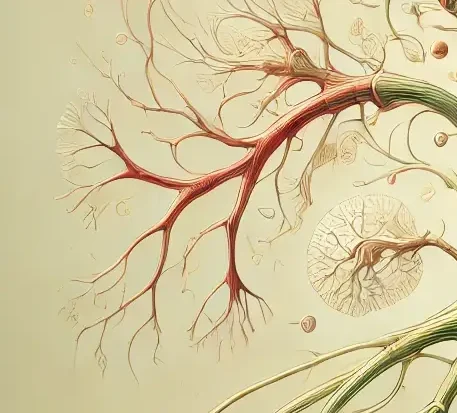Our bodies are incredibly complex, and their functioning goes far beyond the bones, muscles, and tendons we often focus on. At the heart of it all is the nervous system, a vast network of nerves that transmit sensory information between your brain and every corner of your body. This intricate system controls everything from how you move and feel to how you react to stress and recover from it.
But what happens when the nervous system itself is out of sync? You might experience tension, pain, or even chronic stress that doesn’t seem to go away—even with regular physical treatments. This is because sometimes working directly with tissues and bones isn’t enough; we need to address the nervous system to help it regulate and restore balance.
Why Your Nervous System Matters in Healing
The nervous system operates in two primary states:
- The “fight or flight” response (sympathetic nervous system) – designed to keep you safe in emergencies but can lead to chronic stress when overactive.
- The “rest and digest” response (parasympathetic nervous system) – vital for recovery, relaxation, and healing.
In today’s world, it’s common to get stuck in a state of constant alertness, where your body holds onto stress. This can lead to tight muscles, headaches, poor sleep, or even digestive issues. That’s why understanding and supporting your nervous system is a key part of long-term health and well-being.
Supporting Your Nervous System: Where Massage Fits In
Massage is more than just a way to relax—it’s a tool to help your body shift from “fight or flight” to “rest and digest.” Gentle techniques like myofascial release or reflexology work not only on your muscles but also on your nervous system, promoting deep relaxation and improved body awareness.
In fact, some of the most profound results I see in my practice come from addressing the nervous system directly. Techniques that focus on rhythm, flow, and gentle pressure can encourage the body to release stress patterns, helping clients feel not just physically better but emotionally and mentally calmer too.
Takeaway: A Holistic Approach to Wellness
So, the next time you think about your body, don’t just consider the surface layers. Think deeper—about the connection between your brain, your body, and your nervous system. When you nurture that connection, healing and well-being become far more attainable.
Your nervous system is an amazing ally. How are you supporting it today?
Source: Quick Tip: How well do you know your nervous system?
Related posts:
- Opinions and their formation Why facts don't change our minds? Revisiting a relatively old article in these strange times of opinions that fly in the face of facts. https://www.newyorker.com/magazine/2017/02/27/why-facts-dont-change-our-minds?...
- Getting Your Protein From Plants May Help You Live Longer Discover how shifting protein sources from animals to plants can enhance your longevity! Research shows that legumes, nuts, seeds, and whole grains may lower the risk of cardiovascular disease and mortality. It's not just about eliminating meat; plant-based proteins offer vital nutritional benefits. From supporting your microbiome to regulating inflammation,...
- Why Wellness Isn’t About Finding a ‘Magic Button’ Wellness isn’t a quick fix; it’s a journey of understanding your body’s signals and making intentional changes for lasting improvements. Over time, habits can create imbalance. Massage therapy provides stillness and promotes self-reflection. It’s about connecting with your body and mind for true healing. Discover how to embrace a balanced...
- Testosterone: A Magic Button Myth This content addresses the allure of advertisements claiming to increase testosterone levels and the misconceptions surrounding testosterone decline in men as they age. While testosterone does decrease gradually, the symptoms often blamed on low levels are more frequently linked to lifestyle issues like stress and poor sleep. Real solutions involve...

